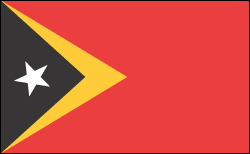East Timor History


Indonesia's Human Rights Abuses Focus International Attention on East Timor's Bid for Independence
Indonesia's invasion and its brutal occupation of East Timor—small, remote, and desperately poor—largely escaped international attention. East Timor's resistance movement was violently suppressed by Indonesian military forces, and more than 200,000 Timorese were reported to have died from famine, disease, and fighting since the annexation. Indonesia's human rights abuses finally began receiving international notice in the 1990s, and in 1996 two East Timorese activists, Bishop Carlos Filipe Ximenes Belo and José Ramos-Horta, received the Nobel Peace Prize for their efforts to gain freedom peacefully.
After Indonesia's hard-line president Suharto left office in 1998, his successor, B. J. Habibie, unexpectedly announced his willingness to hold a referendum on East Timorese independence, reversing 25 years of Indonesian intransigence. As the referendum on self-rule drew closer, fighting between separatist guerrillas and pro-Indonesian paramilitary forces in East Timor intensified. The UN-sponsored referendum had to be rescheduled twice because of violence. On Aug. 30, 1999, 78.5% of the population voted to secede from Indonesia. But in the days following the referendum, pro-Indonesian militias and Indonesian soldiers retaliated by razing towns, slaughtering civilians, and forcing a third of the population out of the province. After enormous international pressure, Indonesia finally agreed to allow UN forces into East Timor on Sept. 12. Led by Australia, an international peacekeeping force began restoring order to the ravaged region.







